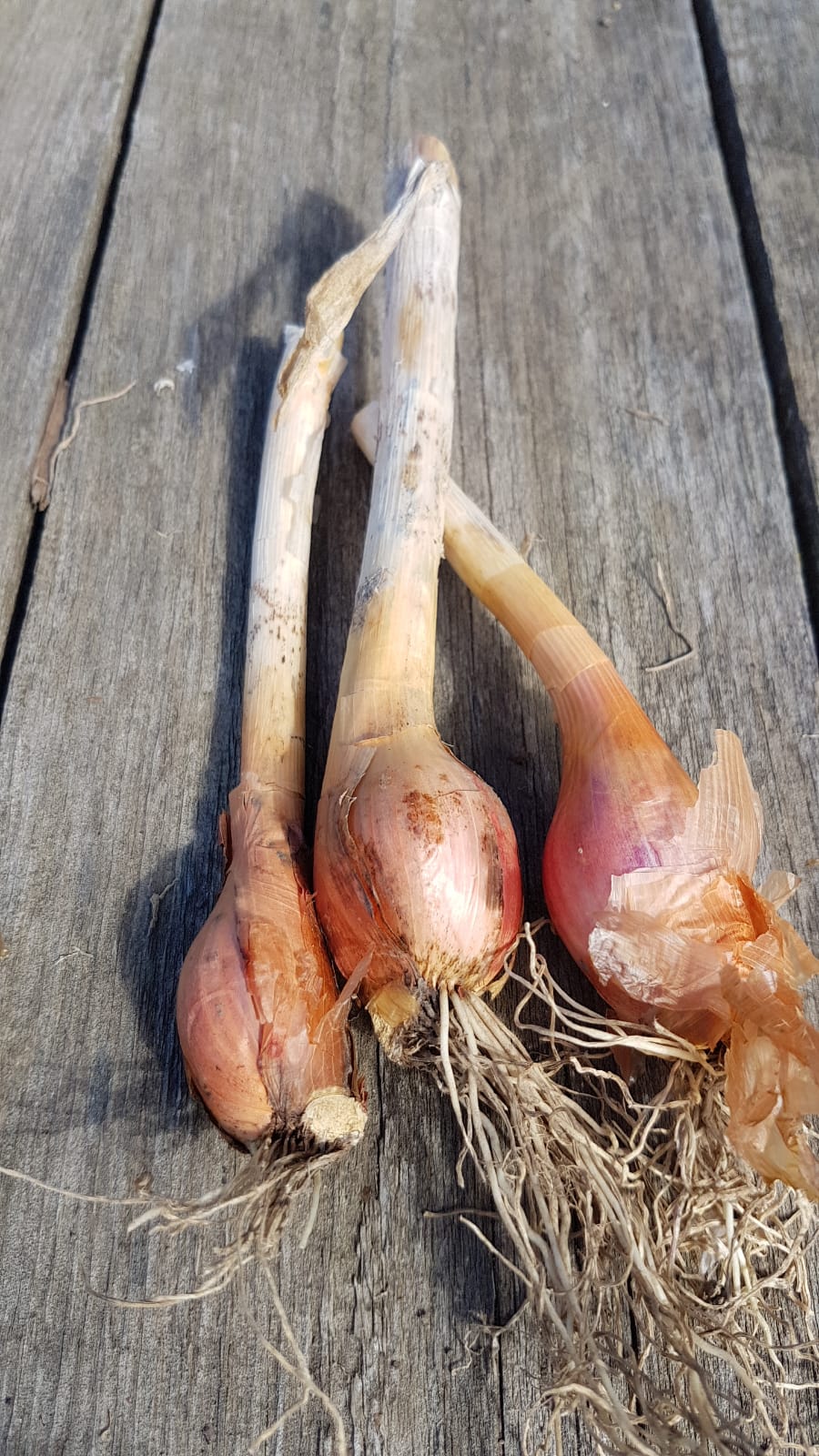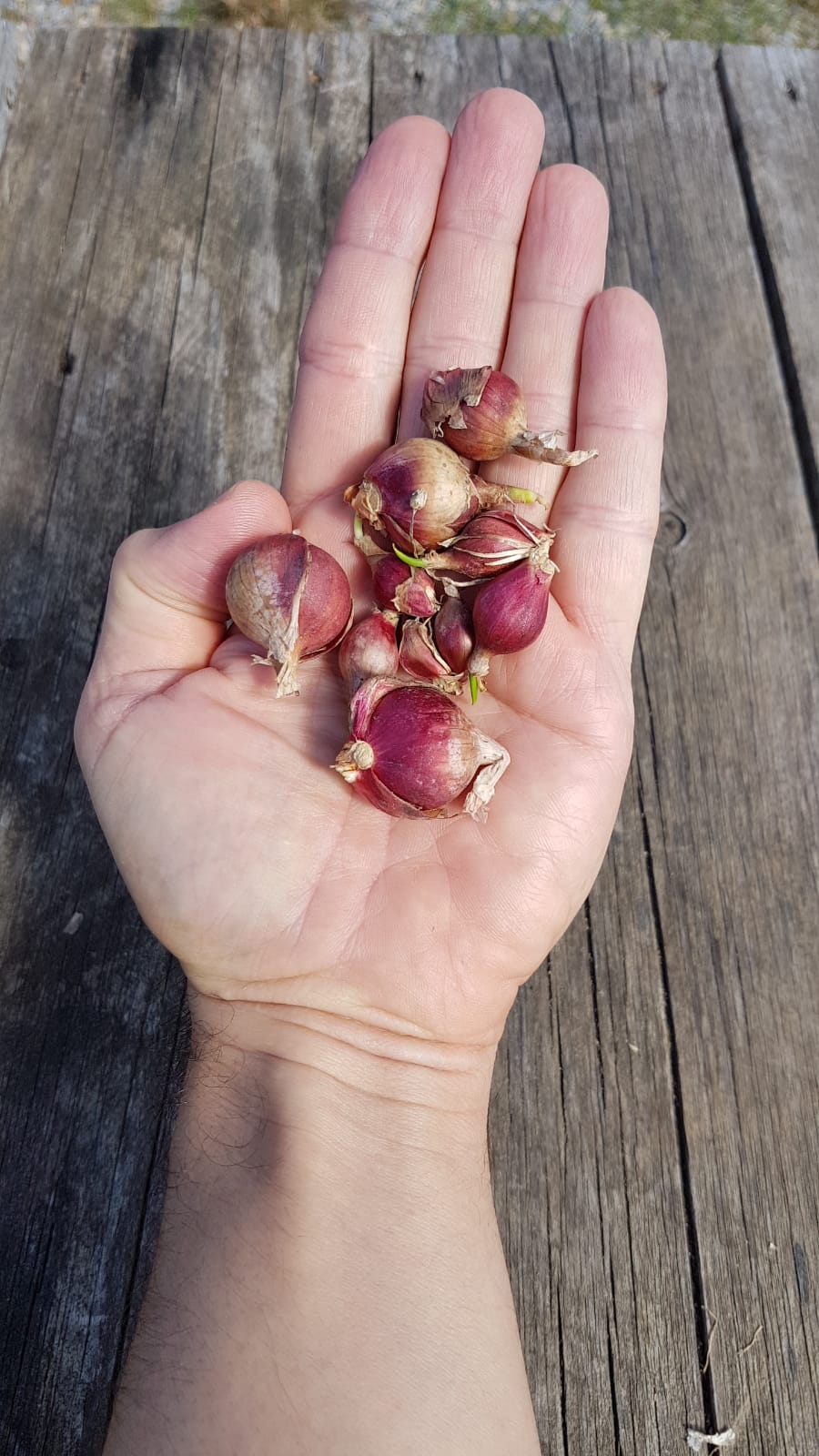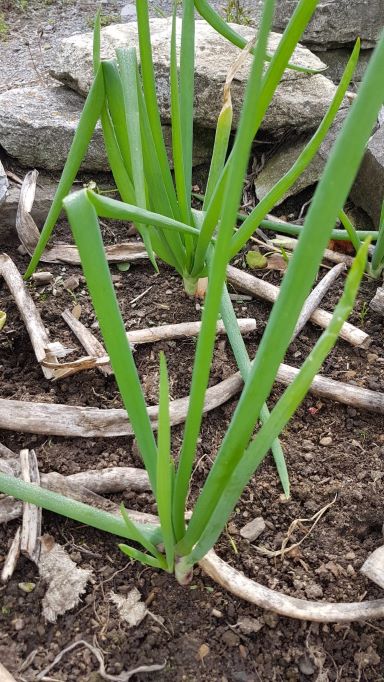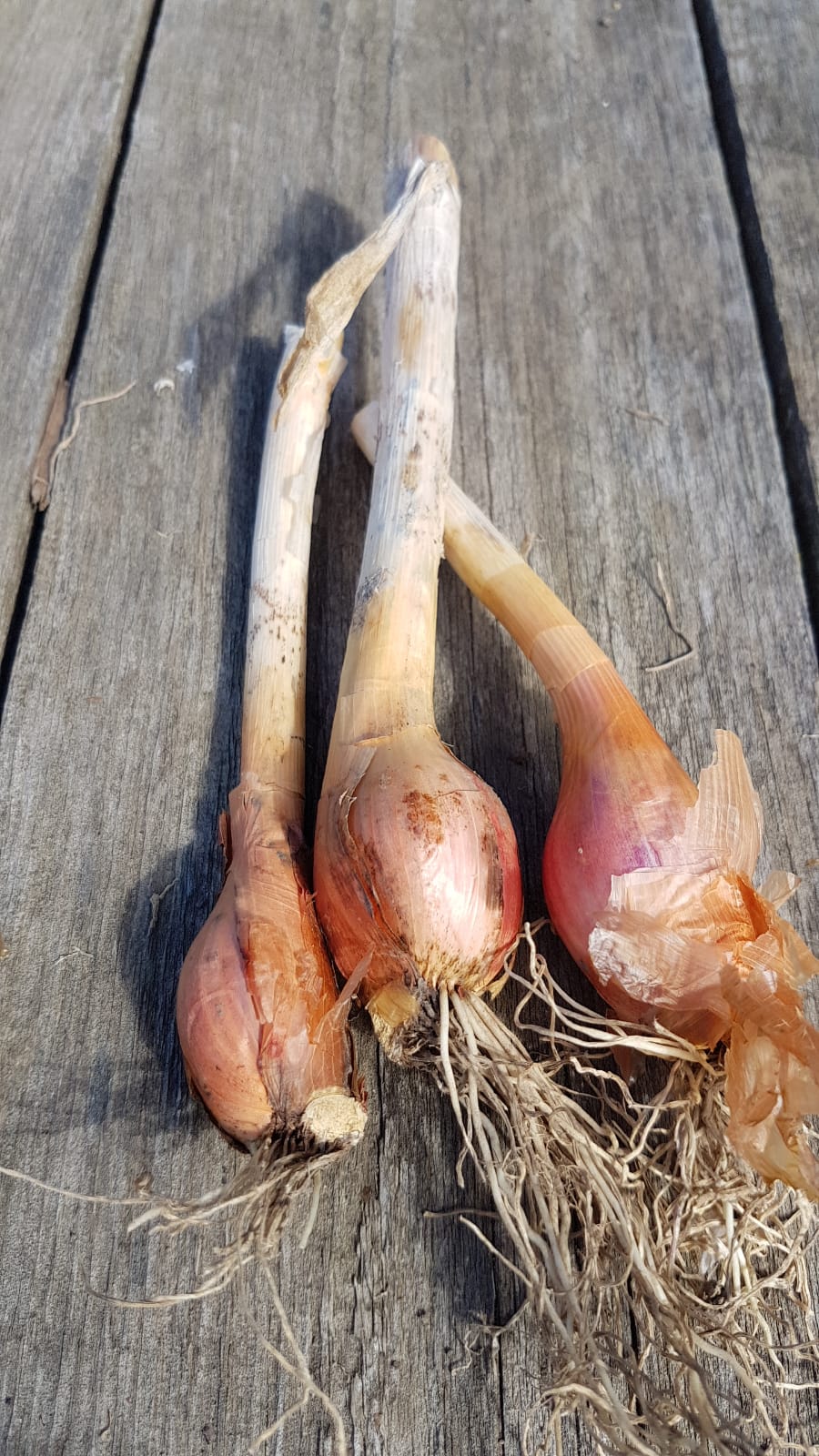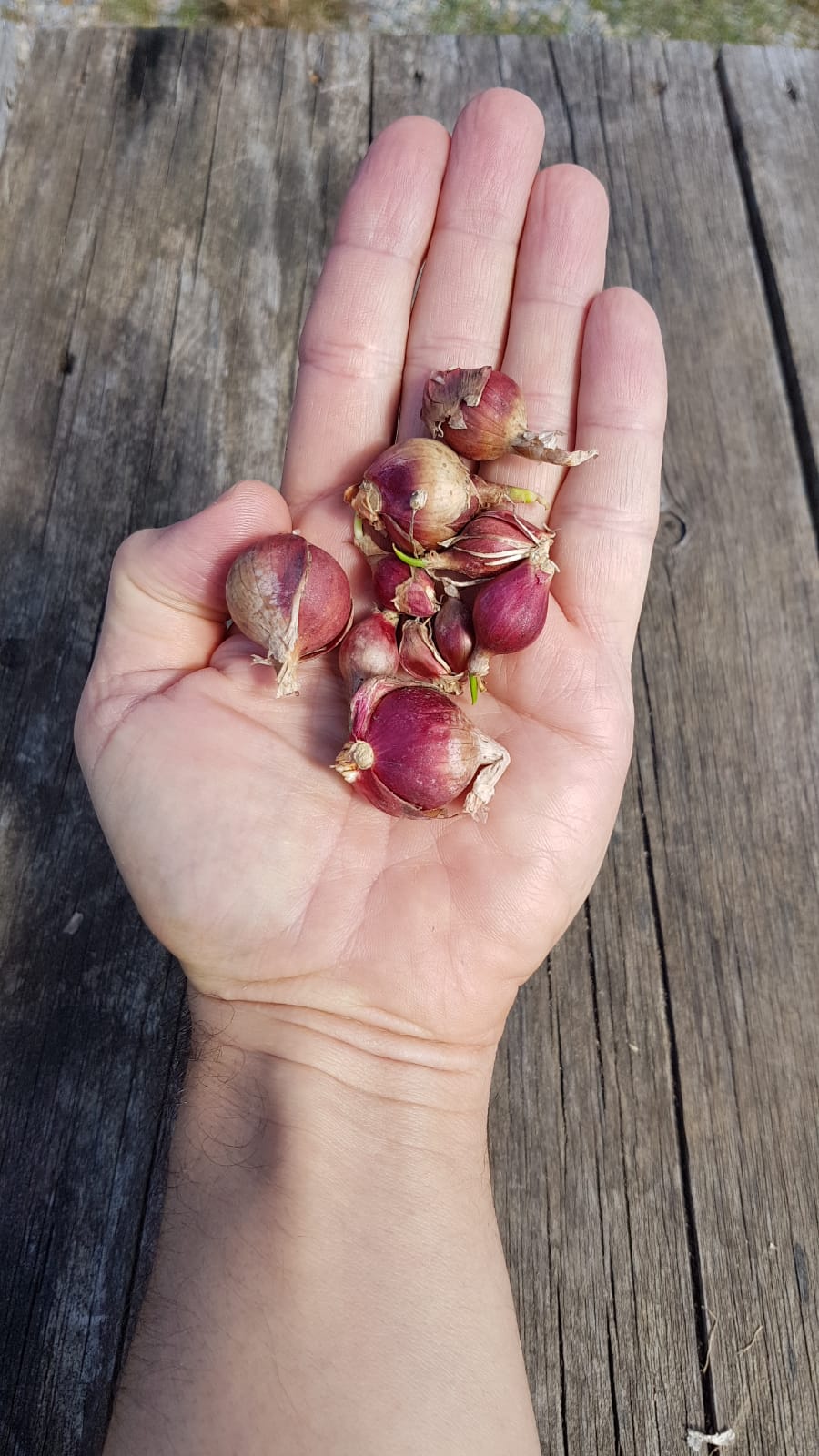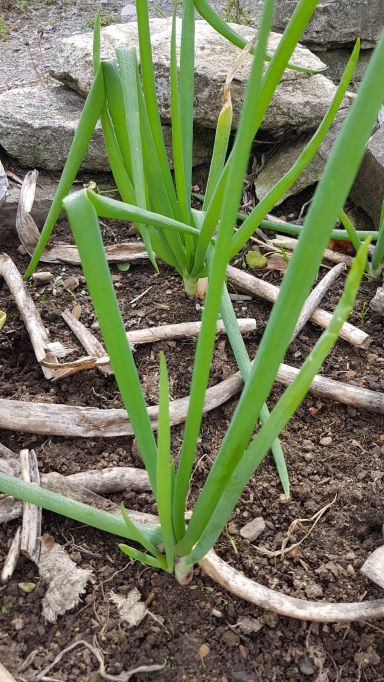Egyptian Walking Onion, Allium x proliferum (4 bulbils)
Egyptian Walking Onion, Allium x proliferum (4 bulbils)
Couldn't load pickup availability
This might be the most useful of all perennial vegetables. Onions are used in just about every recipe and this one does double duty: it can be used as a regular slicing onion, although it is smaller than the store-bought giants we are used to, and it produces abundant, delicious scallions year-round. Its flavour is both stronger and more complex (think French shallots) than standard white onions, and a smaller quantity gets the same results. Its moniker comes from its habit of producing topset bulbils instead of flowers, much like garlic. Those tend to flop once mature and replant themselves unless harvested, hence the name. We sell them in sets of 4 bulbils.
Cultivation: Full sun, light soil (not a fan of clay, but with lots of compost to lighten the mood, it works just fine), hardy to zone 3. Can be propagated quickly once established, by bulb division and especially by its many bulbils (themselves edible), which is what we sell here. But easy to control and not weedy. Space 10 cm or more and cut the scapes before the bulbils form for larger slicing onions (similarly to garlic) or plant closer for abundant scallions and topsets. The bubils will produce an onion the first year when planted in the fall or spring, and a larger one the second year. In mild climates, scallions are produced year-round in the garden. In colder areas, place harvested, dormant onions in a glass of water and get a handful of green tops in about two weeks. Keep the cycle going, and scallion eternity is now yours to enjoy.
Food preparation: Slicing onions and scallions: the possibilities are endless. 🔪
Ethnobotany: The common onion, allium cepa, is an old world, ancient cultivated plant with many varieties. Allium proliferum is a cross between allium cepa and allium fistulosum, the Welsh onion (itself from China, go figure). Walking onions are now present throughout the world and have likely been in Asian and European gardens for millenia. We frequently find them in new and abandoned gardens here in North America, brought by immigrants of past generations. We found one of the plants we propagated in a thoroughly rewilded old Irish settler homestead abandoned a century ago in a not very hospitable part of central Ontario. Agriculture on the Canadian Shield in those days was at best a gamble. These onions are true survivors. They’ve been a friend of the gardener and cook for nearly as long as humans have plied those trades. Some traditions are worth continuing.
Share
